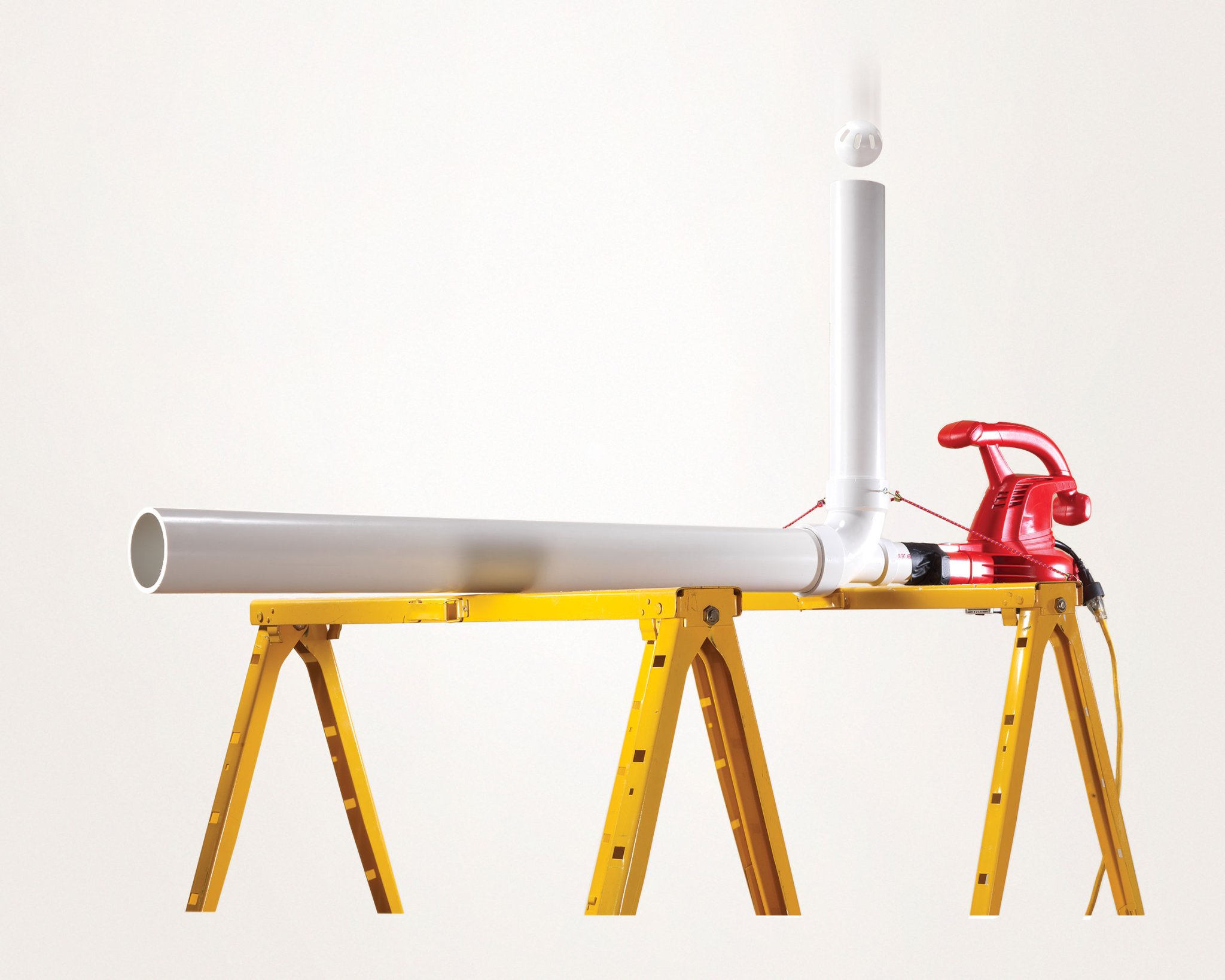

Update: We made a video to demonstrate how to build a wiffle ball pitcher; watch it here.
At this year’s Labor Day picnic, don’t yawn through another game of Wiffle ball. Instead, transform the low-key sport into a battle of batter versus machine. With only cheap plumbing supplies and a leaf blower, you can build a Wiffle ball cannon that will barrage players with an endless volley of howling pitches.
The project hinges on a key component: a PVC plastic fitting called a “low-heel inlet elbow,” available at most hardware stores. Although it’s typically used to vent bathroom plumbing, by a miraculous quirk of fate, the elbow happens to be the ideal tool to transform a leaf blower into a Wiffle ball pitcher.
One inlet of the 3”x3”x2” fitting accepts a 3-inch-diameter PVC barrel—the ideal size for a regulation Wiffle ball. The 2-inch inlet connects to most round leaf-blower nozzles (with the help of duct tape). And the third opening supports a vertical loading tube.
That’s where the action starts. Hold a Wiffle ball at the top of the loading tube and wait for it to be sucked in. The stream of air from the leaf blower will blast the ball through the elbow and out the barrel with a speed of about 50 mph. Batter up!
#

Build It
Materials:
• 3”x3”x2” low-heel inlet elbow
• 10-foot-long, 3-inch-diameter PVC pipe
• 18-inch-long, 3-inch-diameter PVC pipe
• 4-inch-long, 2-inch-diameter PVC pipe
• 2 small screw eyes
• 2 bungee cords
• 3 sawhorses
• Duct tape
• Leaf blower with 2-inch-diameter round opening
Instructions:
Drill two 1⁄8-inch-diameter holes into the thick part of the inlet elbow (A). Insert screw eyes.
Attach the 10-foot-long PVC pipe to the elbow’s 3-inch opening (B) in line with the 2-inch one. Don’t reduce the barrel length—it provides range and velocity.
Attach the 18-inch-long pipe to the other 3-inch opening (C) on the inlet elbow. This is the Wiffle ball–loading tube.
Center the assembled pipes on the sawhorses and rotate them so the loading tube is vertical. Attach bungee cords from the sawhorses to the screw eyes to hold the loading tube in place.
Insert one end of the 4-inch-long pipe into the 2-inch hole (D) on the inlet elbow. Align its other end with the leaf-blower nozzle and use duct tape to securely seal the connection.
Turn on the leaf blower, insert the Wiffle balls in the loading tube, and watch them shoot out! You can elevate the barrel with wood blocks to fine tune your pitch for the strike zone.

How It Works
It’s not just gravity that feeds Wiffle balls into the pitching machine. The dynamics of air flow fuel the rapid-fire action.
Ready: Even when air seems still, its molecules constantly jiggle in random directions. But when molecules speed out of the leaf blower, the energy that was fueling the random motion instead focuses on traveling in a single direction.
**Set: **The random motion of molecules contributes to air pressure. Without it, the focused air streaming from the leaf blower has a lower pressure than the jiggling air in the vertical loading tube. This pressure difference sucks air from the loading tube into the elbow.
**Action: **Drop a Wiffle ball in the loading tube, and the pressure difference will pull it into the elbow, along with the air around it. Then the flow from the leaf blower shoots the ball out the horizontal barrel like a blast froma cannon.
_This article originally appeared in the September 2014 issue of _Popular Science.
